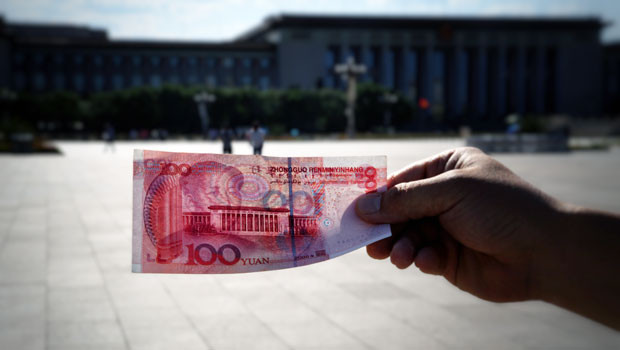Asia report: Markets mixed as China industrial profits fall

Asia-Pacific stock markets finished with a mixed performance on Wednesday, as investors weighed May inflation figures from Australia and industrial profits data from China.
“Asian equity markets traded in a mixed fashion overnight, failing to fully sustain the momentum from the gains on Wall Street,” said Patrick Munnelly at TickMill Group.
“The Nasdaq outperformed due to strong data and a rebound in the tech sector.
“The Australian monthly consumer price index data, which came in softer than expected, further reinforced expectations that the Reserve Bank of Australia (RBA) would keep interest rates unchanged at its upcoming meeting.”
Munnelly noted that gains for the Nikkei 225 were supported by recent currency weakness and indications that Japan was leaning towards extending support measures for gas and electricity bills.
“These measures are set to expire at the end of September and aim to strengthen the economy.
“However, the Hang Seng and Shanghai Composite remained subdued as Chinese industrial profits continued to contract significantly.
“Additionally, concerns arose over the US considering new restrictions on AI chip exports to China amid fears of their potential use in weapons development and hacking.”
Markets mixed across the region amid fresh economic data
In Japan, the Nikkei 225 rose by 2.02% to close at 33,193.99, while the Topix index ended the trading session 1.99% higher at 2,298.60.
Nippon Sheet Glass led the gains on Tokyo’s benchmark, surging 7.94%, followed by Nippon Telegraph & Telephone and Yamaha Motor, which increased 5.23% and 4.48% respectively.
Conversely, mainland Chinese markets ended the day on a lower note, with the Shanghai Composite seeing a slight decrease of 0.002% to 3,189.38, while the Shenzhen Component dropped 0.47% to 10,926.32.
The tech sector was hit hardest, with EmdedWay Shanghai and Inesa Intelligent Tech A both plummeting, losing 10.02% and 9.99% respectively.
In Hong Kong, the Hang Seng Index managed a modest gain of 0.12% to close at 19,172.05.
Shenzhou, Haidilao International, and Anta Sports Products all registered advances, gaining 2.46%, 2.43%, and 2.39% respectively.
South Korean stocks declined, with the Kospi index falling by 0.67% to close at 2,564.19.
LG Chemicals and Lotte Chemical Corporation were amongst the biggest losers, declining 5.83% and 5.27% respectively.
Australian markets performed positively, with the S&P/ASX 200 index rising by 1.1% to 7,196.50.
Star Entertainment Group led the way with an 11.5% gain, closely followed by Dicker Data which surged 5.67%.
In New Zealand, the S&P/NZX 50 index increased by 0.72% to close at 11,733.46, led by Oceania Healthcare and Fletcher Building, which gained 5.41% and 3.1% respectively.
In currency markets, the yen was marginally weaker against the dollar to last trade at JPY 144.09.
The down under dollars were off more significantly on the greenback, changing hands at AUD 1.5075 and NZD 1.6420, representing changes of -0.8% and -1.19% respectively.
In commodity markets, Brent crude futures were last down 0.11% on ICE to $72.18 per barrel, while the NYMEX quote for West Texas Intermediate was 0.1% lower at $67.63.
Industrial profits plummet in China, Australian inflation eases
In economic news, official data released earlier revealed that profits from China's industrial firms plunged 18.8% in the first five months of 2023 compared to the same period last year.
According to a statement from the country’s National Statistics Bureau, the figure was a 1.8 percentage point improvement from the 20.6% decline recorded for the January-April period.
However, the monthly data, which the National Statistics Bureau only sometimes publishes, indicated a 12.6% contraction in Chinese industrial profits for May, compared to the same month last year.
“The recovery in industrial profits is likely to be slow and bumpy,” said Duncan Wrigley at Pantheon Macroeconomics.
“Power rationing is a near-term risk, as the summer peak-load season approaches, entailing restrictions on power supply for industrial and commercial users in certain regions, in order to shield households’ electricity supply.
“Surplus productive capacity coupled with soggy demand, at home and abroad, probably will continue to drive down producer prices into 2024, hitting profits.”
Wrigley noted that exports were now falling again, adding that the second-half global outlook was looking dismal.
“China is likely to add limited fiscal and quasi-fiscal stimulus to the recent 10 basis point lending rate cuts, but this will merely keep growth on track for a relatively conservative ‘about 5%’ GDP growth target.”
Elsewhere, the Australian Bureau of Statistics reported that the country's inflation rate has softened in May. Australia's weighted inflation rate was reported at 5.6% for the month, a marked decline from April's rate of 6.8% and below the 6.1% forecast by economists surveyed by Reuters.
Headline inflation also slowed to 5.8% in May, down from the 6.9% recorded in the previous month.
It was the lowest inflation rate that Australia had seen since April 2022, indicating a possible ease in cost pressures.
Reporting by Josh White for Sharecast.com.